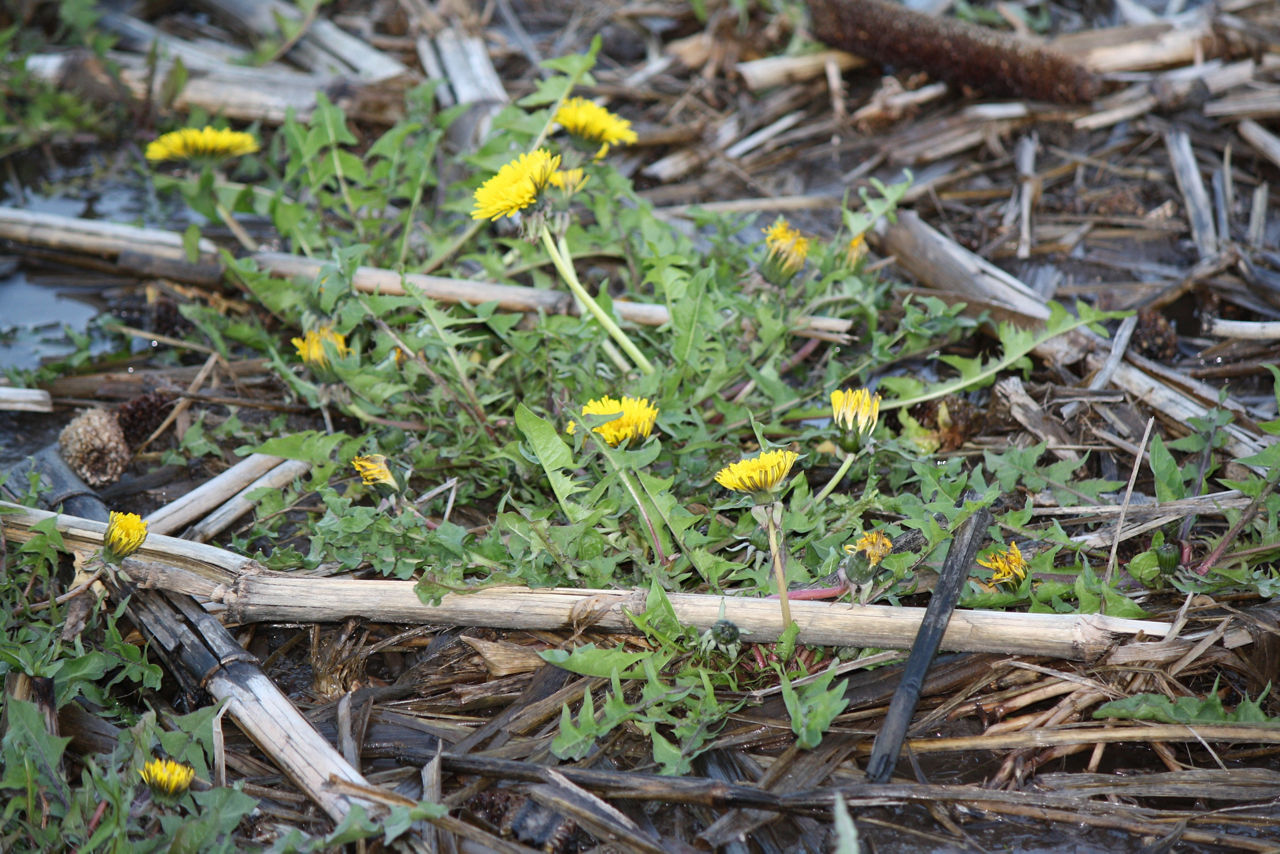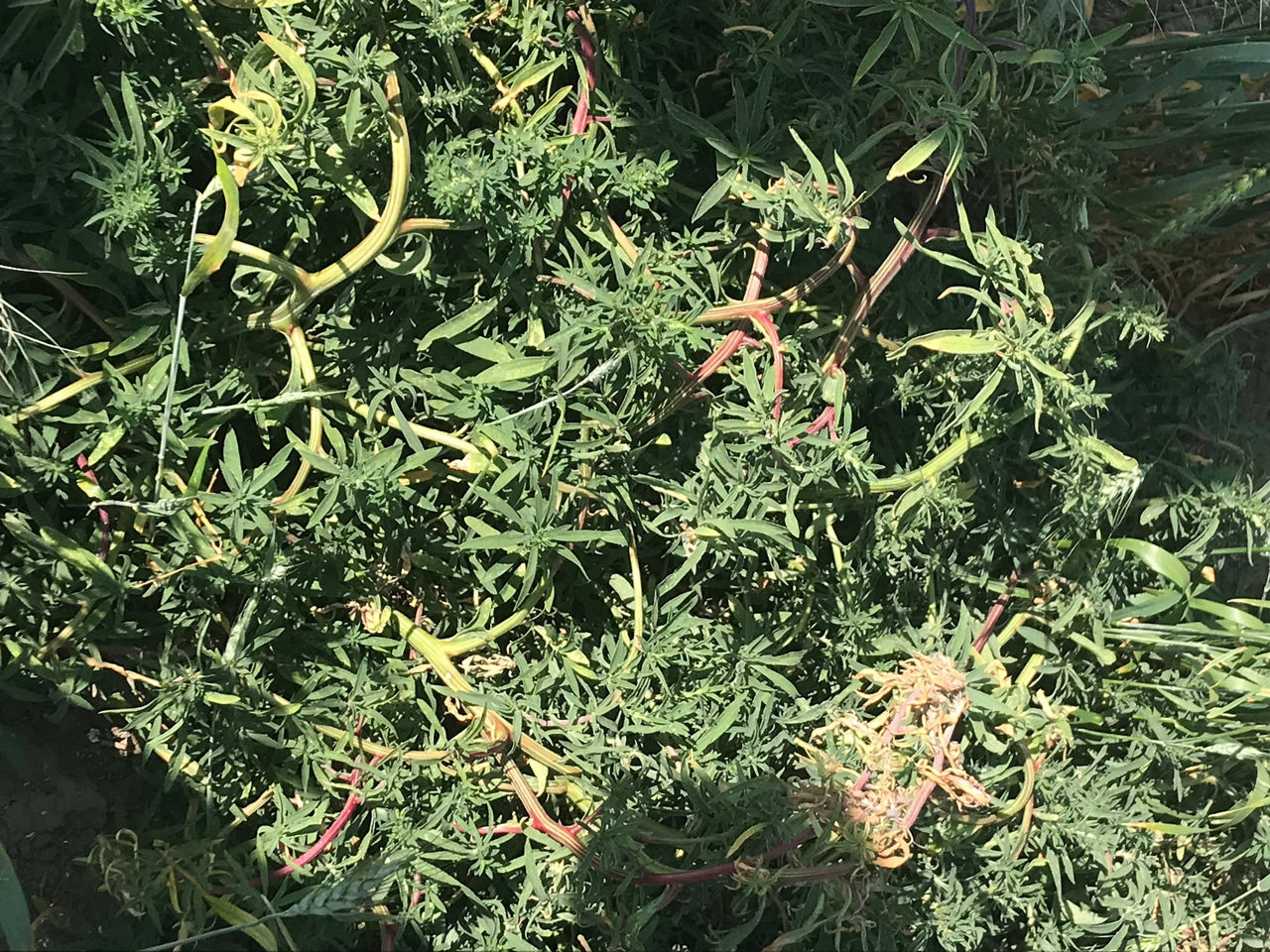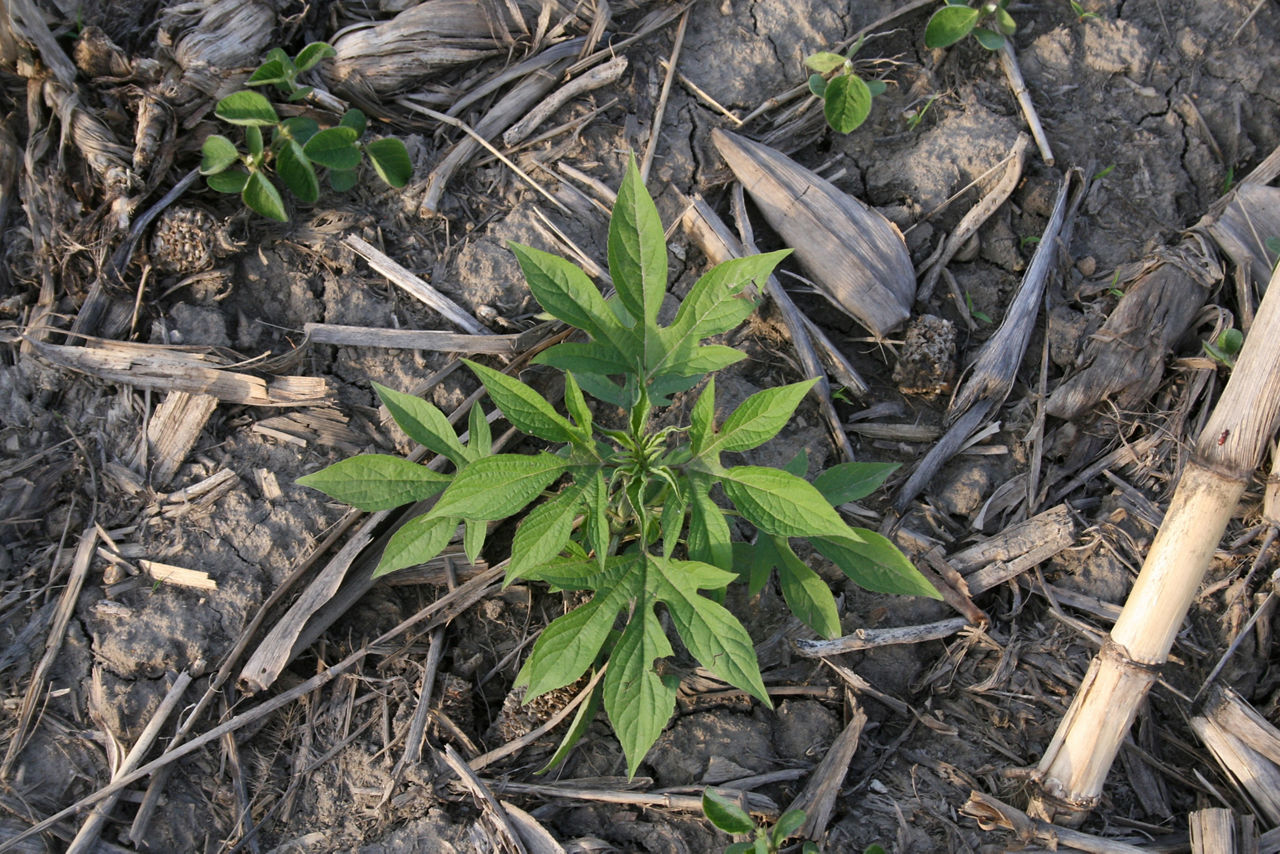7 MIN READ
Early Spring Herbicide Timing for No-Till Soybeans
February 22, 2022
Start Clean, Stay Clean
Fields under continuous no-till may have increasing weed issues if not managed correctly, including changes in weed species composition, densities, and pattern of weed emergence. Soybean growers often hear the advice, ‘start clean, stay clean.’ Controlling weeds early, during the critical weed-free period for soybeans, is important for minimizing yield losses from weed competition. Soybeans are adaptable, but research has shown that they are sensitive to early season weeds.1 Soybeans do not compete well with weeds and can be adversely affected especially right after germination. If weeds are not controlled prior to planting, they will continue to grow and may be more difficult to control later. Effective burndown applications and soil-applied residual herbicides should be applied prior to crop emergence.
Know Your Weeds
Growers need to take an aggressive approach to managing weeds in no-till soybean systems. Knowing which weeds are present will help growers develop an appropriate control strategy. Among the weeds that are increasingly important in no-till systems are marestail (horseweed), Palmer amaranth, giant ragweed, waterhemp, dandelion, and kochia. For more information on weed identification and management, please visit The Weeds on Your Farm
Marestail – There are two primary periods of emergence with this weed– from late summer into fall, and from late March through June. Marestail can die over the winter as a result of cold temperatures and lack of adequate moisture, but plants that survive are aggressive in their growth habits. A single plant can produce up to 200,000 seeds that are transported by wind.2,3 Herbicide resistance (ALS and glyphosate) is also an issue with this species. If not managed prior to planting, it becomes increasingly difficult to manage.
Palmer amaranth -- Contaminated combines, other farm equipment and water can transport palmer amaranth seeds from field to field. Palmer amaranth is an aggressive weed – it can grow one to 3 inches a day, and a single plant can produce up to a million seeds. It has a prolonged emergence period, rapid growth rate, prolific seed production, and propensity to evolve herbicide resistance quickly.4
Giant Ragweed—Early crop planting favors giant ragweed since it is one of the first weeds to emerge after a crop is planted. It has the ability to emerge as early as March through early August. Management of giant ragweed is a challenge because it is adapted to many different environments in addition to agricultural soils, including floodplains, fencerows, roadsides, and wastelands. It’s also called giant for a reason – it’s a tall weed capable of reaching 15 feet in height, obviously outgrowing a soybean crop. 5,6
Waterhemp – Because of the vast number of plants that can come up in an area, waterhemp is one of the most serious, aggressive annual weeds. In-season competition with soybeans can lead to yield loss as high as 44 percent.7 Waterhemp grows rapidly, typically 1 to 1 ¾ inches per day during the growing season. It is a prolific seed producer like pigweed species and single plants can produce as many as 1 million seeds. Waterhemp seeds can be easily transported by contaminated machinery, waterfowl and spread by poultry litter. Like many other weeds, waterhemp seeds also remain viable in the soil for several years.7,8,9
Dandelion -- The reduction of tillage and interrow cultivation, in combination with herbicides used as the primary weed management tactic, has resulted in increased relative abundance of dandelion in soybean fields in some areas. Dandelion taproots have carbohydrates moving to above ground plant parts during rapid spring growth, making dandelion difficult to control with lower labeled rates of glyphosate. Dandelion roots are also able to generate new shoots, making control difficult later in the season. Residual herbicides should be considered to manage germinating dandelion seeds. Seeds falling on wet soil in June can establish new plants; some seeds may remain dormant and maintain the seed bank from one year to the next.10,11
Kochia –Kochia reproduces from seeds, typically producing around 15,000 seeds per plant. Seeds are dispersed in the fall when the plant matures. If left undisturbed, it becomes a tumbleweed resulting in long-distance seed dispersal. It can also be transported by combines and other farm equipment. Kochia is tolerant of drought and has high tolerance to saline soils. Seeds are somewhat short-lived in the soil lasting only two to three years.12,13






Figure 1. Problem weeds occurring in no-till soybean production systems in the US.
Early Scouting
To determine which weeds are present, and because key characteristics of these weed species make them so prolific and difficult to manage, early scouting is critical to successful management of weeds in a no-till scenario. Four main considerations for effective weed control are:
Weeds overwintering - early emerging perennial weeds or biennial weeds that have regrown from last year or started from seed are a challenge to growers.
Season long weed emergence – weeds that have the ability to germinate continuously throughout the growing season present challenges to maintain clean fields at critical times in the crop's growth and development.
Correct weed identification - Proper identification of emerging weeds is also critical early in the season. For example, distinguishing Amaranthus species like waterhemp and Palmer amaranth, and tailoring control methods and chemical application around the predominant weeds emerging in no-till fields (See Table 1).
Seed Banks - Several weed species are prolific, creating huge seed banks. A single waterhemp plant can produce between 250 thousand and a million seeds, making early identification and control critical to successful control in a no-till situation.
Critical Period for Weed Control
The critical period of weed control is a period in the crop life cycle when weed competition causes crop yield loss. Yield loss is minimized when weeds are controlled during this period. For soybeans, the critical weed-free period corresponds to the first-third trifoliate leaf stage (V1-V3). The beginning of this period has been reported as the V1 or V2 soybean stage depending on timing of weed emergence.8 A delay in weed emergence in no-till is expected due to cooler soils in the spring; therefore, scouting fields to identify optimal timing of herbicide application is critical for weed management. Effective weed control is dependent on several factors, including climate, soil type, moisture levels, and weed species, density, and size.
Herbicide Options
For soybean growers with dandelion, giant ragweed, marestail, pigweed, water hemp and other broadleaf weed species present in their no-till fields, the use of pre-plant and pre-emergence residual herbicides offer the best opportunity for effective weed management. In-season management options for these weeds is limited and may not provide effective control once the soybean crop has emerged.
Burndown and Pre-Emergence Herbicides
Burndown and Pre-emergence herbicides provide effective control of weeds as seedlings germinate and emerge from the soil and help reduce the seedbank during the growing season. In addition, applying an herbicide early and ensuring the soybean plants are growing vigorously buys the grower time to minimize competition with weeds during a critical part of the crop development. Including pre-emergence herbicides in a spray program can reduce post-emergence herbicide applications by ensuring a healthy crop that can compete for resources and crowd out weeds.
Herbicide Application Timing
Key to effective weed control is timing of herbicide applications. Warm spring temperatures initiate weed growth sooner, and activity of post emergence herbicides may be limited to suppression of perennial and winter annual weeds during the growing season. Spring control for perennial and winter annual weeds should begin before planting or emergence of the crop.
Sources
12019. Eliminating early weed competition in soybeans. Top Crop Manager.
22021. Marestail in soybeans: Strategies for the best control. Kansas State University. Agronomy eUpdates. Issue 841.
3Lous, M. and Johnson, B. 2021. Control of marestail in no-till soybeans. Purdue University Extension.
4Gullickson, G. 2020. How to beat palmer amaranth in soybeans. Successful Farming.
https://www.agriculture.com/crops/soybeans/how-to-beat-palmer-amaranth-in-soybeans
5Johnson, B, Loux, M., Nordby, D, Sprague, C., Nice, G., Weshoven, A,, and Stacler, J. Biology and Management of Giant Ragweed. The University of Missouri. GWC-12
62021. Go after giant ragweed in soybeans early. Indiana Prairie Farmer
7Waterhemp management in soybeans. The University of Missouri. Weed Science. Take Action Publication.
8Jha, P. 2020. Using ‘many little hammers’ to beat back resistant waterhemp. No-Till Farmer.
9Werle, R. 2018. Waterhemp management in soybeans. University of Wisconsin Extension. Wisconsin Weed Science.
https://www.wiscweeds.info/post/waterhemp-management-in-soybeans/
10Kells, J. Hillger, D., and Sprague, C. 2006. Dandelion management in field and forage crops. Michigan State University Extension.
https://www.canr.msu.edu/news/dandelion_management_in_field_and_forage_crops
11Deneke, D. 2020. Spring dandelion control in soybeans. South Dakota State University Extension.
https://extension/sdstate.edu/spring-dandelion-control-soybeans
12CropLife Staff. 2017. 5 keys to managing kochia in soybeans. CropLife.
https://www.croplife.com/crop-inputs/herbicides/5-keys-managing-kochia-soybeans/
13Kochia Management in Soybeans. The University of Missouri. Weed Science. Take Action Publication.
2004_S7